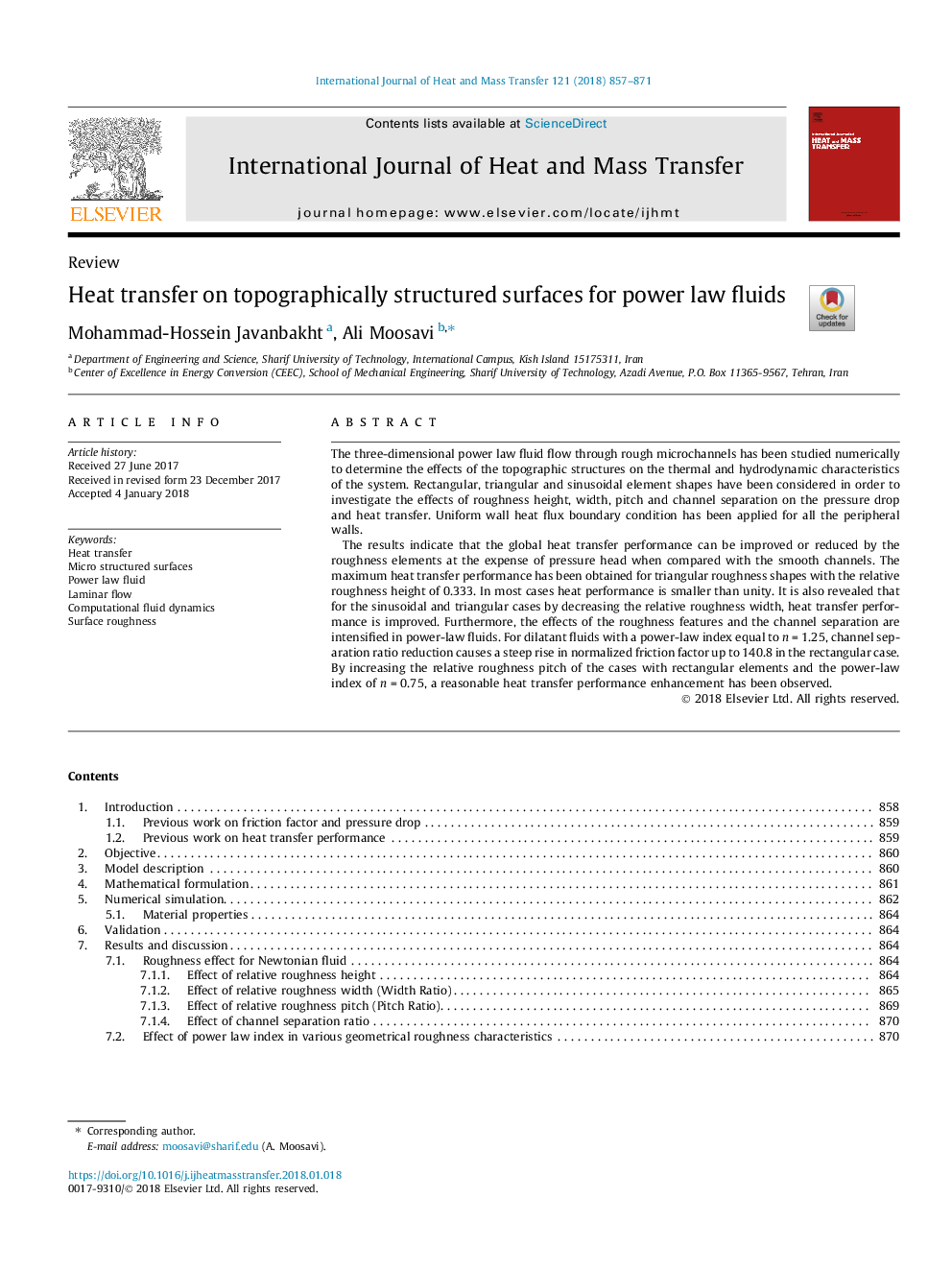| Article ID | Journal | Published Year | Pages | File Type |
|---|---|---|---|---|
| 7054531 | International Journal of Heat and Mass Transfer | 2018 | 15 Pages |
Abstract
The results indicate that the global heat transfer performance can be improved or reduced by the roughness elements at the expense of pressure head when compared with the smooth channels. The maximum heat transfer performance has been obtained for triangular roughness shapes with the relative roughness height of 0.333. In most cases heat performance is smaller than unity. It is also revealed that for the sinusoidal and triangular cases by decreasing the relative roughness width, heat transfer performance is improved. Furthermore, the effects of the roughness features and the channel separation are intensified in power-law fluids. For dilatant fluids with a power-law index equal to n = 1.25, channel separation ratio reduction causes a steep rise in normalized friction factor up to 140.8 in the rectangular case. By increasing the relative roughness pitch of the cases with rectangular elements and the power-law index of n = 0.75, a reasonable heat transfer performance enhancement has been observed.
Related Topics
Physical Sciences and Engineering
Chemical Engineering
Fluid Flow and Transfer Processes
Authors
Mohammad-Hossein Javanbakht, Ali Moosavi,
